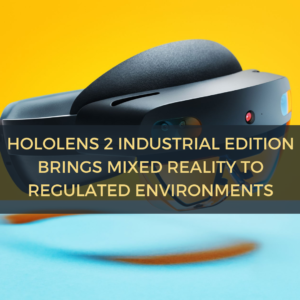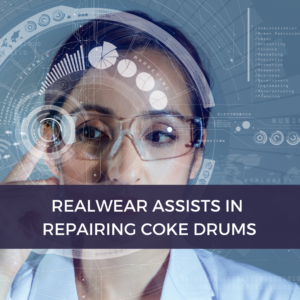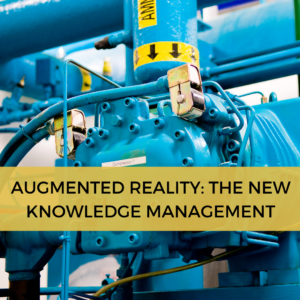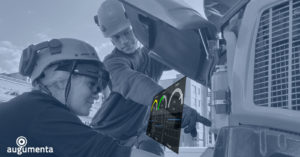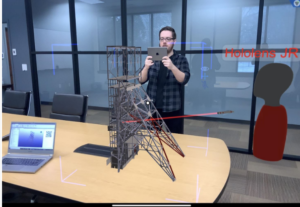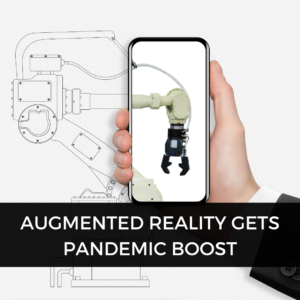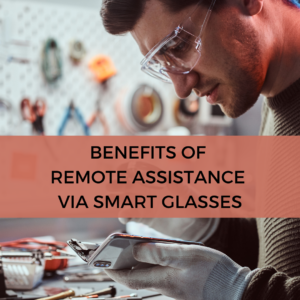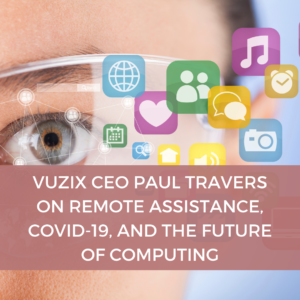When AREA member Augumenta participated in an AREA webinar about implementing AR on factory shop floors recently, we thought it would be worth catching up on the company and its activities. So we spoke the Eve Lindroth, the company’s head of Marketing Communications. Here’s our conversation.
AREA: Augumenta has distinguished itself as a leader in industrial shop floor uses of AR. To what do you attribute your success so far?
Lindroth: We have a large number of big and well-known industrial companies as our clients, and within these projects, our solutions have been adopted with very few changes. That tells us that we are taking the right approach to developing solutions for the industry. Our clients also praise the ease-of-use of our applications, and appreciate that there is no steep learning curve to start using them. Quite the opposite, they are considered easy to learn.
AREA: What’s a typical Augumenta client?
Lindroth: Most of our business is outside Finland. We have many manufacturing customers in France and Germany, for example, such as Siemens. We also have a presence in Japan and Taiwan which is important considering our focus on the Asian markets and the key customer projects we have ongoing there.
A typical client is a larger industrial company that is active in developing their operations – or during the pandemic, companies that are simply looking for the most efficient and practical ways to keep operating.
AREA: Speaking of that, in October, you announced a partnership with IISI of Taiwan. Tell us about the partnership, its goals, and its progress to date.
Lindroth: IISI is a system integrator and they have a very strong customer base in the fields of manufacturing and government. In our partnership, Augumenta acts as a technology/applications provider and the IISI experts do the final customization and integration with the end customer’s backend systems. Both companies can focus on their key strengths: we on the cutting-edge AR technology, and IISI on developing and managing the overall systems.
We started working together in the springtime and we have finalized all the customization needed for the end customer, a major semiconductor factory in Taiwan. We continue working in close cooperation with IISI and believe we are in a good position to advance enterprise AR in Taiwan together with them.
AREA: What do you see as the most significant barriers to AR adoption, and what is Augumenta doing to overcome them?
Lindroth: We have seen in many pilot projects that the organization has identified the problem they are looking to solve with a pilot, but for example, there are difficulties in defining the current status with an accurate number. For example, there’s downtime – how much there is and which factors exactly are causing it? That can be hard to come by. Another issue is user acceptance, but that can often be tackled by involving the people in planning the solutions from an early stage.
At Augumenta, we’re working to address those issues. For industrial pilots, for example, we created a simple checklist, just to remind the project managers and team leaders responsible for the pilot to consider the factors we have learned to be essential for an AR pilot’s success. These are related to things like target setting, planning together with your people and getting them involved throughout the process, or measuring the results. The checklist is available on our website.
AREA: What can we expect from Augumenta in 2021?
Lindroth: In the future, we believe that discrete industrial AR applications will become more integrated solutions. That means, for example, that there aren’t separate apps for alerting a user and guiding a user in tasks. There will be one solution that can do all of this – without the end user even noticing that there are many use cases included in the app. At some point, things like AI will make the end user’s job even easier by guiding him to the right data or expert automatically, for example.
A key success factor in such a solution is usability. Apps have to integrate seamlessly and be simple and intuitive to use independent of the use case at hand.
The pandemic has meant growth in demand for our services along with our clients’ need to find new ways to do things. In 2021, you’ll see closer integration of our apps. We’re working with new app features that are enabling efficient and sustainable working methods in the new normal. We’ll keep you posted with the latest developments during 2021.
AREA: Finally, how has Augumenta benefitted from its membership in the AREA?
Lindroth: The AREA has provided us with access to research, and there have been some great and very interesting research projects completed. We have also made many new contacts within the ecosystem via the AREA, and it’s always great to see and hear what’s going on with other ecosystem members. The AREA updates its social media channels very actively, and we appreciate the visibility they provide us.
